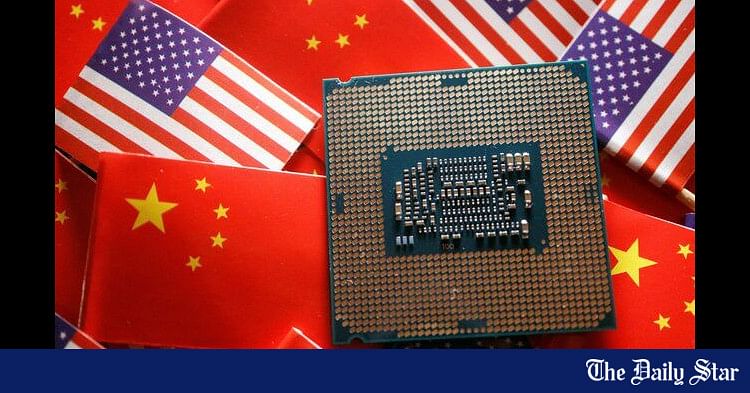The year was 1993. Chinese cargo ship Yinhe, sailing across the Indian Ocean, found its GPS equipment jammed, which depended on the US global satellite navigation system. Soon enough, US Navy ships appeared and wanted to search the vessel. Why? Because Washington suspected it was carrying chemical weapon materials for Iran. After a humiliating three-week standoff with food and water running out, the ship was searched, but no such cargo was found. Deeply humiliated, Beijing resolved that it must have its homegrown technology so such an incident would never be repeated. The outcome is BeiDou—better, bigger, and more advanced than any other satellite navigation system available today.
A similar spirit drives China’s ambitions in the satellite broadband race, as ventures like Qianfan (also known as Thousand Sails or G60 Starlink), Guowang, and Geespace (developed by the automotive giant Geely) challenge the dominance of SpaceX’s Starlink.
Launched in 2019, Starlink began with the ambitious goal of providing high-speed, low-latency internet coverage to even the most remote corners of the globe. It has steadily grown into a formidable network, with nearly 7,000 satellites already in orbit, and plans to deploy thousands more. It has proven to be of strategic value by providing crucial internet services in the Ukraine war. When terrestrial internet infrastructure was disrupted, Starlink terminals enabled Ukrainian forces to maintain communication, coordinate operations, and gather intelligence. This has highlighted the potential of satellite broadband networks to provide resilient communication channels in conflict zones, a capability that China undoubtedly recognises and seeks to achieve.
China’s determination to become a major player in this field is evident. Qianfan, for instance, aims to create a constellation of 13,000 satellites, while Guowang has similar aspirations with its “national-level satellite internet constellation” plan. Geespace focuses on providing services to both the Chinese domestic market and international clients, with a constellation designed to support autonomous driving and other data-intensive applications. These ventures could provide high-speed internet access to underserved and remote areas of China and the world, bridging the digital divide and fostering economic growth. They could also be crucial to China’s military and strategic ambitions, providing secure and reliable communications for its armed forces and intelligence agencies. This competition also encompasses the development of satellite jamming technology. Both players are investing in capabilities to disrupt each other’s satellite networks while protecting their own.
Despite their ambitions and resources, Chinese ventures face significant technological hurdles. Developing and deploying a massive satellite constellation requires advanced technology in areas like satellite manufacturing, launch capabilities, and network management. The United States Space Command (USSC) reported that Qianfan scattered hundreds of space debris while launching 18 satellites in August last year.
The escalating trade war between Washington and Beijing has made this technological competition more complex. The US’s restriction on tech exports to China, specifically designed to hinder the latter’s progress in the space race, has continued since Trump’s first presidency, followed by Biden’s and then Trump’s. The crucial role of artificial intelligence adds another layer of complexity to this race, and companies like DeepSeek, at the forefront of AI innovation in China, are poised to become key players. It also raises question about the effectiveness of US’s tech sanctions on China: are they spurring China’s innovations? Their sophisticated AI algorithms can analyse vast amounts of satellite imagery, enabling enhanced navigation, environmental monitoring, and even national security applications.
Innovative Chinese researchers and companies possess several advantages in the satellite broadband race, including robust government support and substantial financial and policy backing for their ventures. Additionally, China benefits from lower labour and manufacturing costs than the US, providing a significant economic edge. The country also boasts the world’s largest internet market, offering a vast potential customer base. Furthermore, China’s satellite broadband ambitions align with its military and strategic goals, enabling secure communication for its armed forces and intelligence agencies.
However, China must also overcome several crucial technological barriers, such as designing and manufacturing fast and efficient two-nanometre semiconductors, which Taiwan’s TSMC already produces with Washington’s active support (in comparison, China’s SMIC is making five-nanometre chips for Huawei.) Washington’s export controls on sensitive technology could hinder Beijing’s progress. Still, such situations often stimulate innovations, as the development of DeepSeek without NVIDIA’s most advanced chips has shown (it has recently been questioned, though.)
The implications of this competition are far-reaching. It’s not just a commercial contest between companies; it’s a strategic rivalry between two superpowers vying for technological supremacy. The outcome will shape the future of communication, global commerce and access to information, and redefine the balance of power in the 21st century.
Dr Sayeed Ahmed is a consulting engineer and the CEO of Bayside Analytix, a technology-focused strategy and management consulting organisation.
Views expressed in this article are the author’s own.
Follow The Daily Star Opinion on Facebook for the latest opinions, commentaries and analyses by experts and professionals. To contribute your article or letter to The Daily Star Opinion, see our guidelines for submission.


